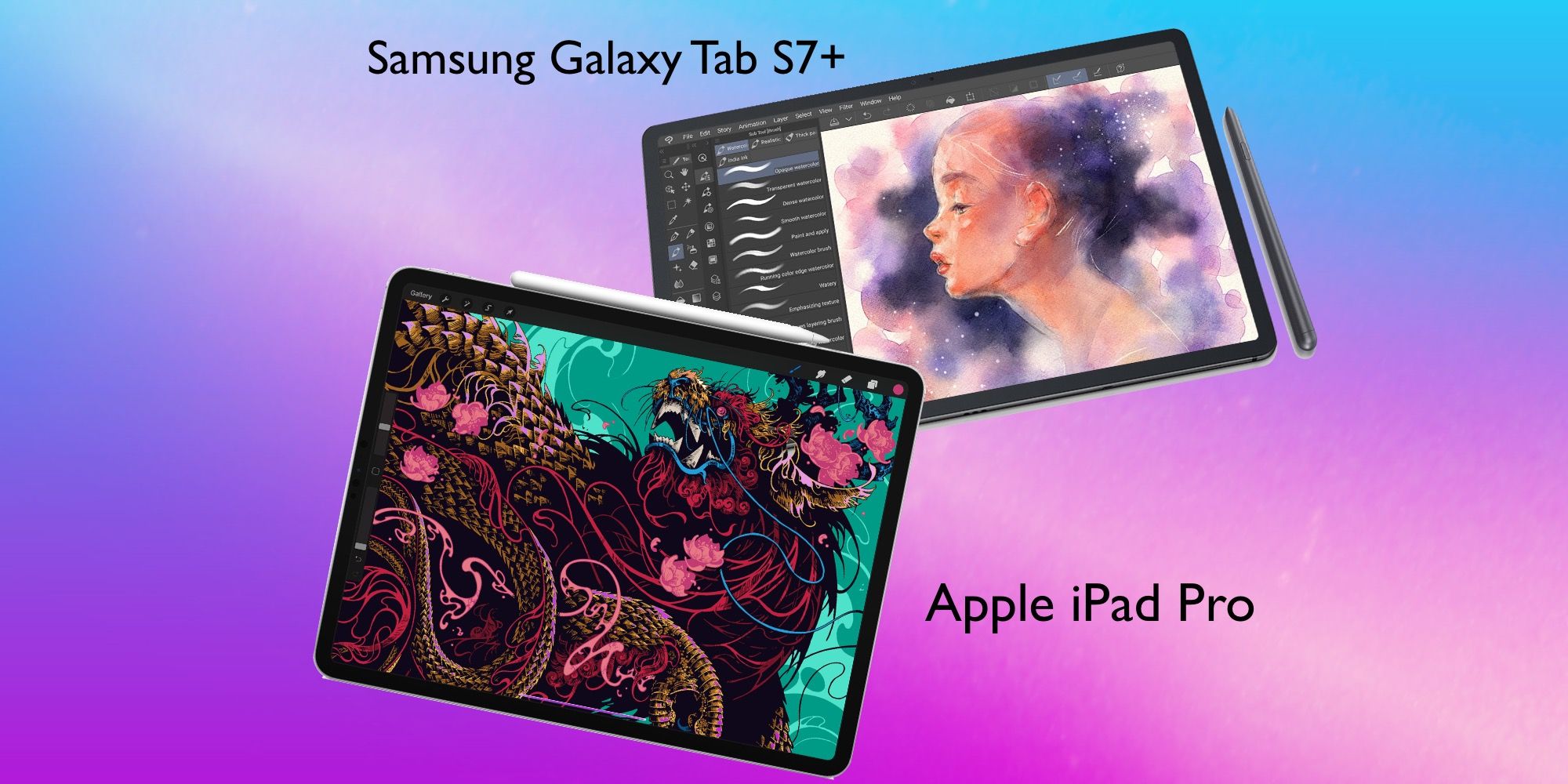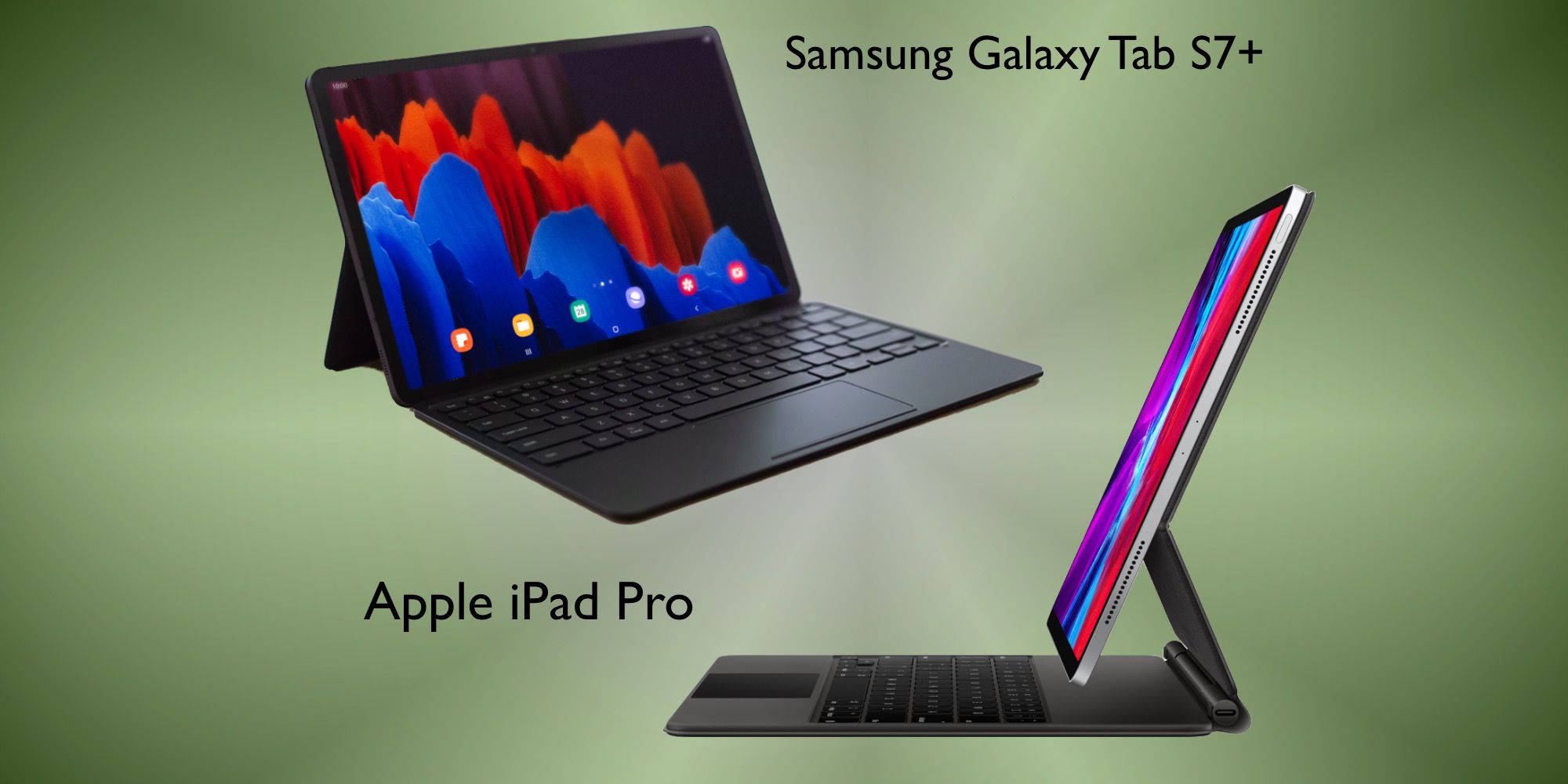At Wednesday’s Galaxy Unpacked event, Samsung announced two new Galaxy Tab S7 tablets. The Tab S series is the best of the best for Android tablets and the latest models bring several advances over the Galaxy Tab S6. How do these powerful new devices from Samsung compare to Apple’s top of the line, and reigning champion of tablets, the 2020 iPad Pro?
Top competitors, Apple and Samsung, have a strong rivalry in smartphones and attempt to match and surpass the other's latest phone with each new release. However, Samsung is seeking to bring that challenge to Apple's iPad as well, releasing several Android tablets each year since 2010. In 2014, Samsung stepped up the pressure with its first Galaxy Tab S, a much more powerful tablet. Ever the explorer, Samsung works to fill every niche in consumer electronics and is already a leader in smartphones, with the likes of the Galaxy S20 and the newly-announced Galaxy Note 20 and Galaxy Z Fold 2 phones.
The Galaxy Tab S7 starts at $649 for the 11-inch and $849 for the 12.4-inch version. Comparing price, the 11-inch iPad Pro starts at $799, while the 12.9-inch iPad Pro starts at $999. It is immediately obvious that Samsung is not claiming the high ground, instead offering good value and undercutting Apple’s prices. Note the very similar screen sizes, which is absolutely not a coincidence as Samsung is targeting the iPad Pro. Both sizes of the Tab S7 include the wonderful and well integrated S Pen. Apple famously denied the value of a stylus with a touch-screen, right up until it added its own with the Apple Pencil. The Pencil is a great addition, on its much improved second version, and with the upcoming release of iPadOS 14, Apple is well on the way to integrating it as thoroughly as Samsung has with the S Pen. By the way, Apple does not include the Pencil, so to enjoy that added functionality costs an additional $129, on top of the already more expensive iPad Pro.
Apple Costs More, But May Be Worth It
The iPad Pro is costlier, but there may be enough value to justify that extra expense. There's little doubting that the iPad Pro’s A12 processor is much faster than the Qualcomm Snapdragon 865+. However, the strongest case to make for the iPad is the depth and number of high quality, tablet-focused apps in Apple’s App Store. Android simply can’t compete. Samsung fills the gap somewhat with targeted apps like easy access to Microsoft Office apps via S Pen actions and a paint app that has been customized for the Tab S7, called Clip Studio Paint. Samsung even made special note that this app wasn’t available on Android before now. But it’s telling that this same app has been available for the iPad for three years. If the usual productivity apps are sufficient, Android has most of what is needed, along with plenty of unusual apps of questionable quality. For more demanding artists, professionals that want a large selection of solid apps or those looking for some uniquely tablet-centric apps, Apple has a big advantage.
There are several other differences, which may or may not make a difference to the individual. Samsung has DeX, that allows connection to a monitor, simulating a desktop computer-like mode. In the past, the processor in Samsung devices broke that illusion quickly, but with the upgraded processor in the Tab S7, it might be a good solution. For some, using a tablet as a tablet works just fine without a monitor or TV connection. Therefore, it all depends on the user. Likewise, Apple’s 2020 iPad Pro includes LiDAR scanners. How many users will need or ever use that feature is unclear, but it is significant tech, with Apple indicating this will play a role in augmented reality development. It’s too soon to know how important that will be and especially for users not interested in gaming or other AR-related industries.
Comparing screen quality won’t really help with a decision, since both Apple and Samsung obsess over incredible display quality. However, Apple has always used a 4:3 aspect ratio, meaning iPad products have more vertical height, even in landscape mode, which is helpful for productivity. Most Android tablets are closer to 16:9, which is great for watching movies, but makes getting work done, or browsing in landscape orientation, feel cramped. Both offer keyboard covers and the iPad's works with trackpads and mice now, so input options don’t narrow the choice. Finally, Samsung offers greater customization and freedom, being an Android-based device, with some tech enthusiasts and tech professionals finding the restrictions that Apple places on the iPad unacceptable. Overall, shoppers will be awed by either choice and as is often the case, the answer of whether to choose one of Samsung’s latest Galaxy Tab S7 tablets or Apple’s newest iPad Pro, depends on the user’s needs and budget.
Source: Samsung


